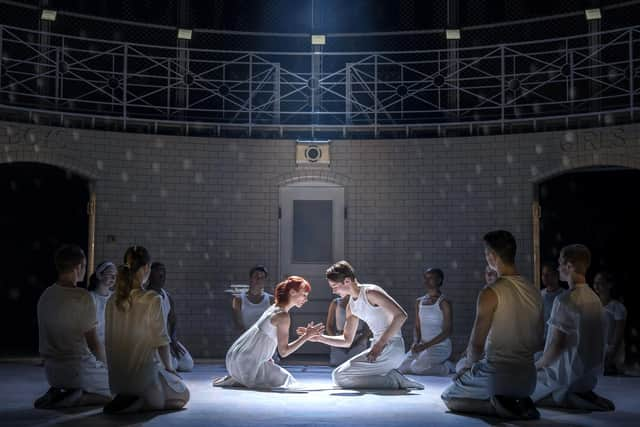Dance review: Matthew Bourne’s Romeo and Juliet, Festival Theatre, Edinburgh
Matthew Bourne’s Romeo and Juliet, Festival Theatre, Edinburgh ****
Famous for never knowingly thinking inside the box, Matthew Bourne was always going to do something new and interesting with Shakespeare’s romantic tragedy. So right from the start, in this Romeo and Juliet, we find ourselves in a very different Verona.
Advertisement
Hide AdThis is the “Verona Institute”, a place of cold, clinical confinement where young people have the individuality drugged and coerced out of them. Against a backdrop of white brick walls, and wearing similarly pristine uniforms, a group of teenagers attempt to hold onto their sense of self. Toeing the line with sharp-edged, synchronised steps, they conform on the surface, but underneath the heat is rising. When it’s finally released, at a sanitised communal dance, Bourne’s production really comes into its own. Staff leave the room, the lights go down, and it’s as if somebody has poured a truck-load of hormones onto the stage. Lust, longing, pent-up sexuality and a slight edge of violence fills the air and – after that – there’s no looking back.


Of course, in the midst of all this teenage angst, love blossoms quickly. Already in-situ, Juliet is clearly a damaged soul – not least because Tybalt the guard has taken an inappropriate shine to her. Romeo arrives slightly later, a love-deprived son dropped off by politician parents keen to see the front of a camera but the back of him. Bourne uses Lez Brotherston’s sterile set to maximum effect, with numerous steel staircases and wall ladders the perfect vehicle for balcony-style romance, while a scene in the boys’ and girls’ respective dorms uses clever theatricality to bounce from one room to the other.
Over 400 years since it first hit the stage, you’d be forgiven for thinking everything that could be done with Shakespeare’s tale of love and death had indeed been done. But Bourne is here, once again, to prove otherwise.